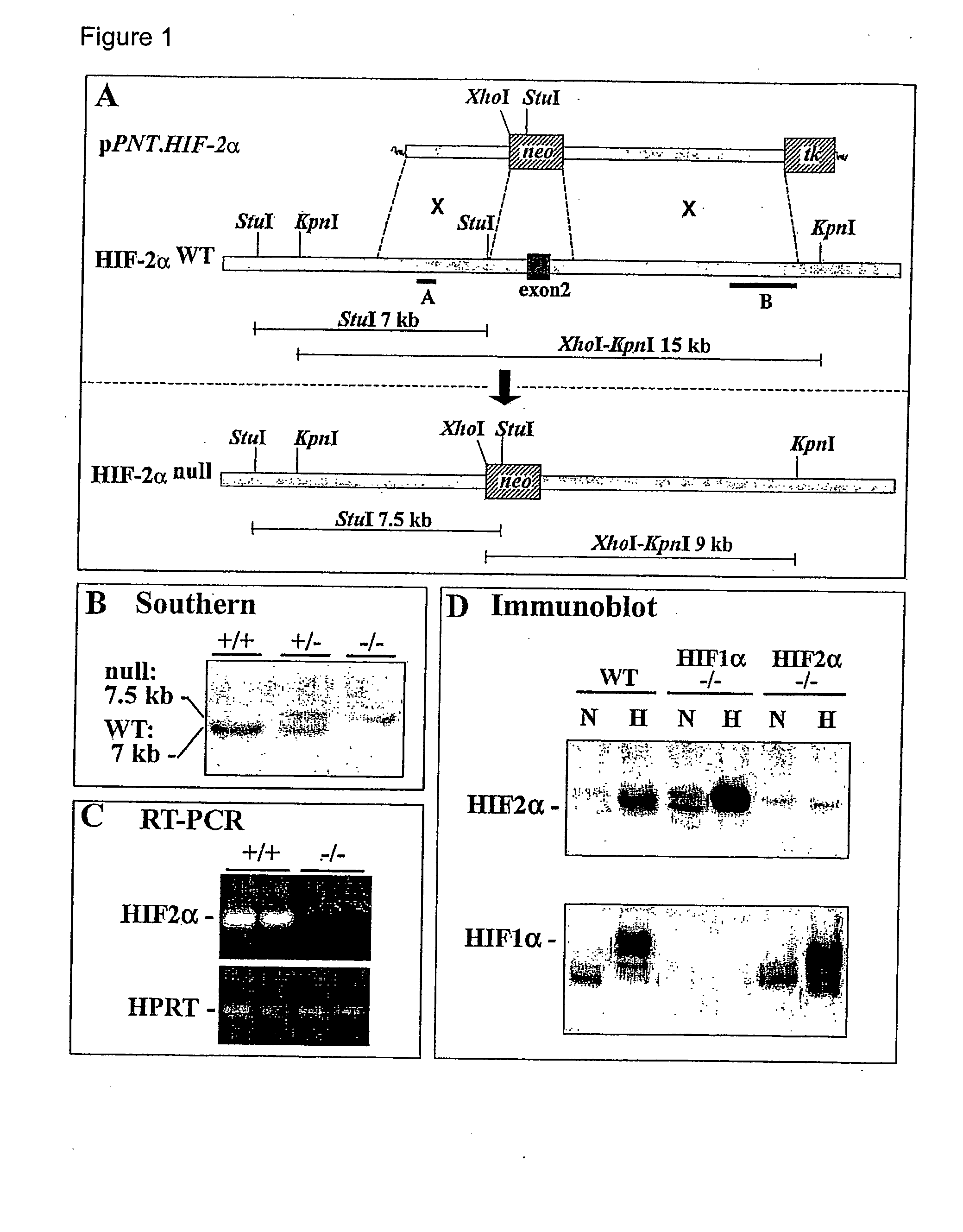Use of hypoxia inducible factor 2 alpha for curing neonatal respiratory distress syndrome and as a target for the treatment of pulmonary hypertension
a technology of inducible factor and target, which is applied in the field of hyperoxia-induced disorders, can solve the problems of insufficient production, dysfunction or deficiency of surfactant, preterm delivery, etc., and achieve the effects of preventing pulmonary hypertension, delayed polycythemia, and impaired pulmonary hypertension and vascular remodeling
- Summary
- Abstract
- Description
- Claims
- Application Information
AI Technical Summary
Benefits of technology
Problems solved by technology
Method used
Image
Examples
Embodiment Construction
Targeting of the HIF-2α Gene in ES Cells
[0033] A genomic BAC clone containing the murine HIF-2α gene sequences was obtained from Research Genetics, Inc. (Huntsville, Ala., USA). The region 8 kb upstream and 10 kb downstream of exon 2 was mapped using restriction digests and Southern blot analysis (FIG. 1). A 2-kb NheI / BamHI fragment and an immediately upstream 5-kb BamHI / EcoRI fragment containing the genomic sequence 3′ to exon 2 were inserted via a three part ligation in the XbaI / EcoRI site of the pPNT vector, resulting in pPNT3′. The pPNT vector contained the neomycin phosphotransferase (neo) gene as positive selection marker and the thymidine kinase (TK) gene as negative selection marker. A 3.5-kb HindIII / StuI fragment containing the genomic sequence 5′ to exon 2 was initially subcloned in pBluescript and afterwards inserted in the NotI / XhoI site of pPNT3′. The resulting construct (FIG. 1) was linearized by NotI and electroporated into R1 ES cells. Targeted inactivation of a sing...
PUM
| Property | Measurement | Unit |
|---|---|---|
| Fraction | aaaaa | aaaaa |
| Fraction | aaaaa | aaaaa |
| Fraction | aaaaa | aaaaa |
Abstract
Description
Claims
Application Information
 Login to View More
Login to View More - R&D
- Intellectual Property
- Life Sciences
- Materials
- Tech Scout
- Unparalleled Data Quality
- Higher Quality Content
- 60% Fewer Hallucinations
Browse by: Latest US Patents, China's latest patents, Technical Efficacy Thesaurus, Application Domain, Technology Topic, Popular Technical Reports.
© 2025 PatSnap. All rights reserved.Legal|Privacy policy|Modern Slavery Act Transparency Statement|Sitemap|About US| Contact US: help@patsnap.com

